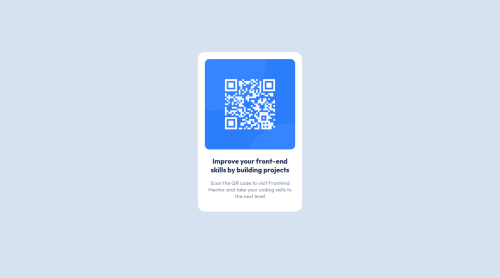Submitted about 3 years agoA solution to the QR code component challenge
Live site Qr-code challenge with CSS and HTML
@Aswinchandran2000

Solution retrospective
Nothing
Code
Loading...
Please log in to post a comment
Log in with GitHubCommunity feedback
No feedback yet. Be the first to give feedback on ASWIN CHANDRAN's solution.
Join our Discord community
Join thousands of Frontend Mentor community members taking the challenges, sharing resources, helping each other, and chatting about all things front-end!
Join our Discord